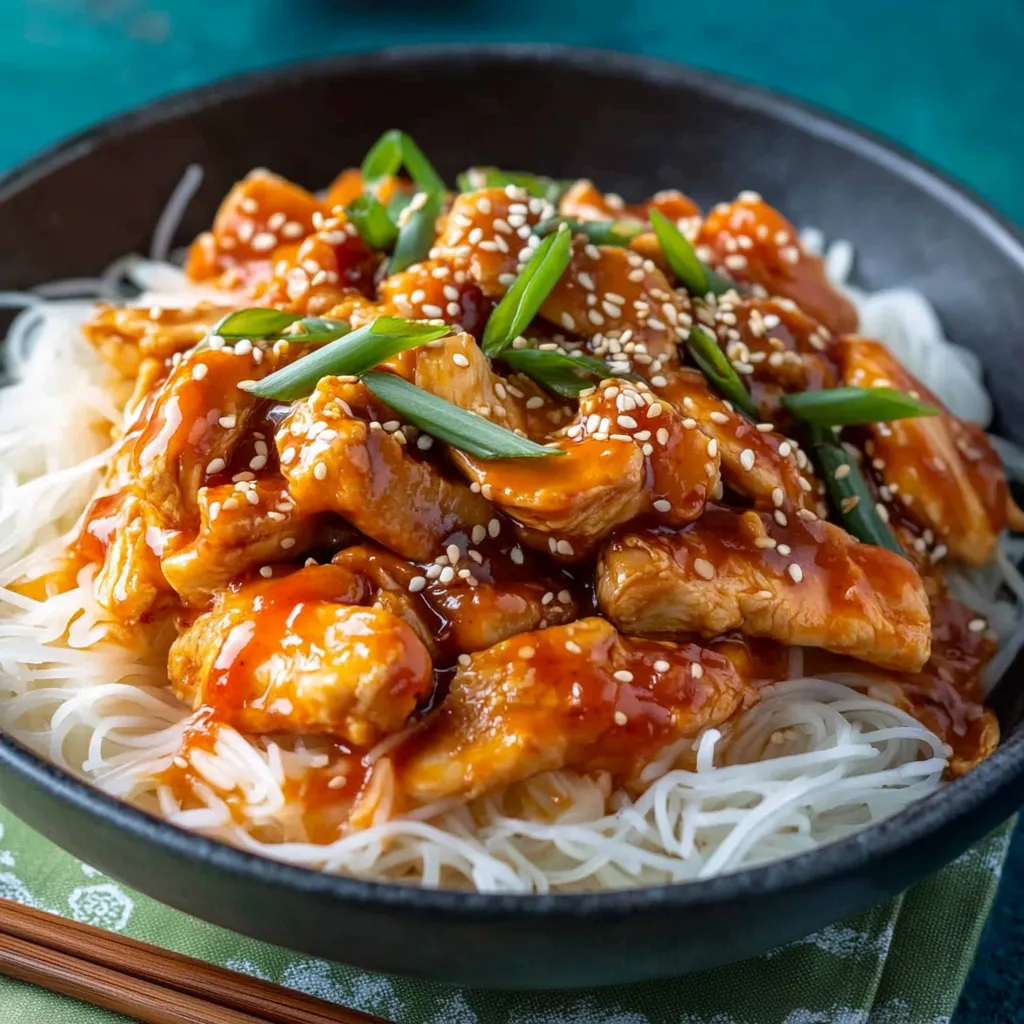 Pin it
Pin it
Tender slices of sweet and spicy marinated pork nestled over steamed rice and delicate noodles create an unforgettable flavor experience in these Korean Spicy Pork Bowls. The combination of gochujang-infused meat with drizzles of creamy sriracha mayo and rich teriyaki sauce delivers the perfect balance of heat, sweetness, and umami in every bite. These colorful, satisfying bowls bring authentic Korean street food flavors right to your dining table with surprisingly simple preparation.
I discovered these bowls during a food conference in Utah where I tasted Cupbop for the first time. After just one bite, I turned to my husband and declared it one of the best things I'd ever eaten. We sought out their actual restaurant location before leaving town just to have it again, then immediately attempted to recreate it at home. The homemade version turned out nearly identical to the restaurant's, and we've been obsessed ever since.
Flavorful Ingredients
- Thinly Sliced Pork: Choose pork shoulder or belly for the most authentic flavor and texture—the marbling creates tender, juicy results after cooking
- Asian Pear: This key marinade ingredient contains natural enzymes that tenderize the meat while adding subtle sweetness—substitute with a regular pear if unavailable
- Gochujang Paste: The foundation of Korean spicy pork with its complex sweet-spicy-umami profile—look for it in Asian markets or international aisles
- Rice Noodles: These delicate, translucent noodles absorb the flavors of the sauces beautifully—traditional Korean dishes use sweet potato noodles (japchae) but rice noodles work wonderfully
- Sriracha Mayo: The creamy, spicy drizzle that ties everything together—easily made by mixing mayonnaise with sriracha to your preferred heat level
- Teriyaki Sauce: Adds glossy sweetness that balances the spicy elements—quality bottled sauce works well, or make your own
- Toasted Sesame Seeds: These nutty little garnishes add essential texture and authentic flavor—toasting them briefly enhances their flavor
Cooking Process
- Prepare Marinade:
- Begin by grating Asian pear, apple, and onion into a large bowl. Add minced garlic, grated ginger, gochujang paste, soy sauce, sesame oil, brown sugar, thinly sliced green onions, and freshly ground black pepper. Stir thoroughly to combine all ingredients into a vibrant red marinade with noticeable fruit pieces.
- Marinate Meat:
- Slice pork thinly against the grain for maximum tenderness. Add to the marinade, ensuring each piece is completely coated. Cover bowl and refrigerate for at least 2 hours, though overnight delivers the most flavor development and tenderization.
- Cook Rice:
- Prepare steamed white rice according to package directions. For authentic flavor, consider short-grain Korean or Japanese rice varieties which offer the perfect sticky texture that pairs beautifully with the sauced pork.
- Prepare Noodles:
- Cook rice noodles or cellophane noodles according to package instructions, being careful not to overcook. Drain thoroughly and toss with a small amount of sesame oil to prevent sticking.
- Cook Marinated Pork:
- Heat a large skillet or wok over medium-high heat. Add a small amount of cooking oil, then cook marinated pork in batches to avoid overcrowding. The meat should caramelize slightly, developing charred edges while remaining tender inside, approximately 3-4 minutes per batch.
- Assemble Bowls:
- Layer steamed rice in the bottom of each serving bowl. Add a portion of cooked noodles alongside or on top. Arrange the sizzling Korean spicy pork over the rice and noodles. Drizzle with sriracha mayo and teriyaki sauce according to taste preferences. Finish with a generous sprinkle of toasted sesame seeds and sliced green onions.
 Pin it
Pin it
My teenage son, who typically approaches new foods with skepticism, devoured his entire bowl and immediately asked when we could have it again. What surprised me most was how the complex flavors in the restaurant version came through so clearly in our homemade recreation—that perfect balance of sweet, spicy and savory that makes Korean cuisine so addictive.
Perfect Pairings
Transform your meal into a complete Korean feast with complementary side dishes. Kimchi provides the perfect tangy counterpoint to the rich, spicy pork with its fermented complexity and crunchy texture. Quick cucumber pickles create a refreshing palate cleanser between bites of the flavorful main dish. For a more substantial spread, include Korean pancakes (pajeon) with their crispy exterior and savory fillings that complement the main dish beautifully.
Exciting Variations
Customize these versatile bowls to create new flavor experiences. Replace pork with thinly sliced beef ribeye for an equally delicious but different flavor profile—marinate for just 1-2 hours as beef tenderizes more quickly. Create a vegetarian version using firm tofu or tempeh that absorbs the marinade beautifully when pressed and sliced thinly before marinating. For a lighter option, serve the spicy meat over a bed of crisp lettuce leaves instead of rice for a refreshing, low-carb alternative that still delivers all the flavor.
Storage Solutions
Maintain the delicious flavors with proper storage techniques. Store marinated uncooked pork in an airtight container in the refrigerator for up to two days before cooking for maximum flavor development. Keep cooked pork separate from rice and noodles in refrigerated containers where it will stay delicious for up to three days. When reheating, warm the pork in a skillet rather than microwave to maintain texture and prevent overcooking. For meal prep convenience, prepare individual components separately and assemble fresh bowls throughout the week.
I've recreated many restaurant dishes at home over the years, but these Korean Spicy Pork Bowls remain my crowning achievement. What makes them special is how they transform simple ingredients into something that feels like it should require a culinary degree to prepare. The way the sweet-spicy marinade caramelizes on the edges of the pork creates these irresistible little flavor bombs that keep you coming back for one more bite. Every time I serve these bowls to guests, they're amazed that something so complex-tasting came from my kitchen rather than a specialized Korean restaurant. This recipe has become our go-to when we're craving takeout but want something fresher, cheaper, and honestly even more delicious than what we'd get delivered.
 Pin it
Pin it
Frequently Asked Questions
- → What is gochujang and where can I find it?
- Gochujang is a Korean fermented red chili paste that's sweet, savory and spicy. You can find it in the international aisle of most grocery stores, at Asian markets, or online.
- → Can I make this recipe less spicy?
- Yes! Reduce the amount of gochujang in the marinade (try 1/4 cup instead) and use less sriracha mayo when assembling the bowls. You could also substitute with a milder chili paste.
- → Is there a substitute for the pear and apple in the marinade?
- The fruit helps tenderize the meat and add sweetness. If unavailable, you can substitute with 2 tablespoons of applesauce or pineapple juice plus 1 extra tablespoon of sugar.
- → Can I use a different cut of pork?
- Absolutely! Pork shoulder or pork belly work great for more fat and flavor. Pork tenderloin is another lean option similar to loin. Just make sure to slice it thinly.
- → How can I make this dish ahead of time?
- The pork can marinate for up to 24 hours, which is perfect for prep ahead. You can also cook the pork and store it separately from the rice and noodles, then reheat and assemble when ready to serve.
- → What sides go well with Korean pork bowls?
- Traditional Korean sides like kimchi, pickled vegetables, or cucumber salad complement these bowls perfectly. A simple side of steamed broccoli or edamame also works well.
